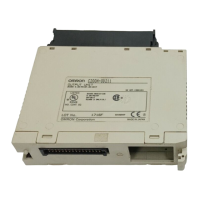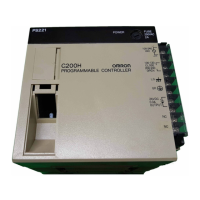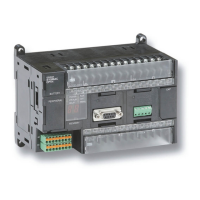86
The following is an example of a one-digit decode operation from digit num-
ber 1 of S, i.e., here Di would be 0001.
S
R
C
0001000000000000
Bit C (i.e., bit number 12) turned ON.
The first digit and the number of digits to be converted are designated in Di. If
more digits are designated than remain in S (counting from the designated
first digit), the remaining digits will be taken starting back at the beginning of
S. The final word required to store the converted result (R plus the number of
digits to be converted) must be in the same data area as R, e.g., if two digits
are converted, the last word address in a data area cannot be designated; if
three digits are converted, the last two words in a data area cannot be desig-
nated.
The digits of Di are set as shown below.
Specifies the first digit to be converted (0 to 3)
Number of digits to be converted (0 to 3)
0: 1 digits
1: 2 digits
2: 3 digits
3: 4 digits
Not used.
Digit numbers: 0 1 2 3
Some example Di values and the digit-to-word conversions that they produce
are shown below.
0
1
2
3
R
R + 1
R
R + 1
R + 2
0
1
2
3
0
1
2
3
0
1
2
3
R
R + 1
R + 2
R + 3
R
R + 1
R + 2
R + 3
S
Di : 0031 Di : 0023
Di : 0030Di : 0010
S
S
S
Digit Designator
Data Conversion Section 5–15

